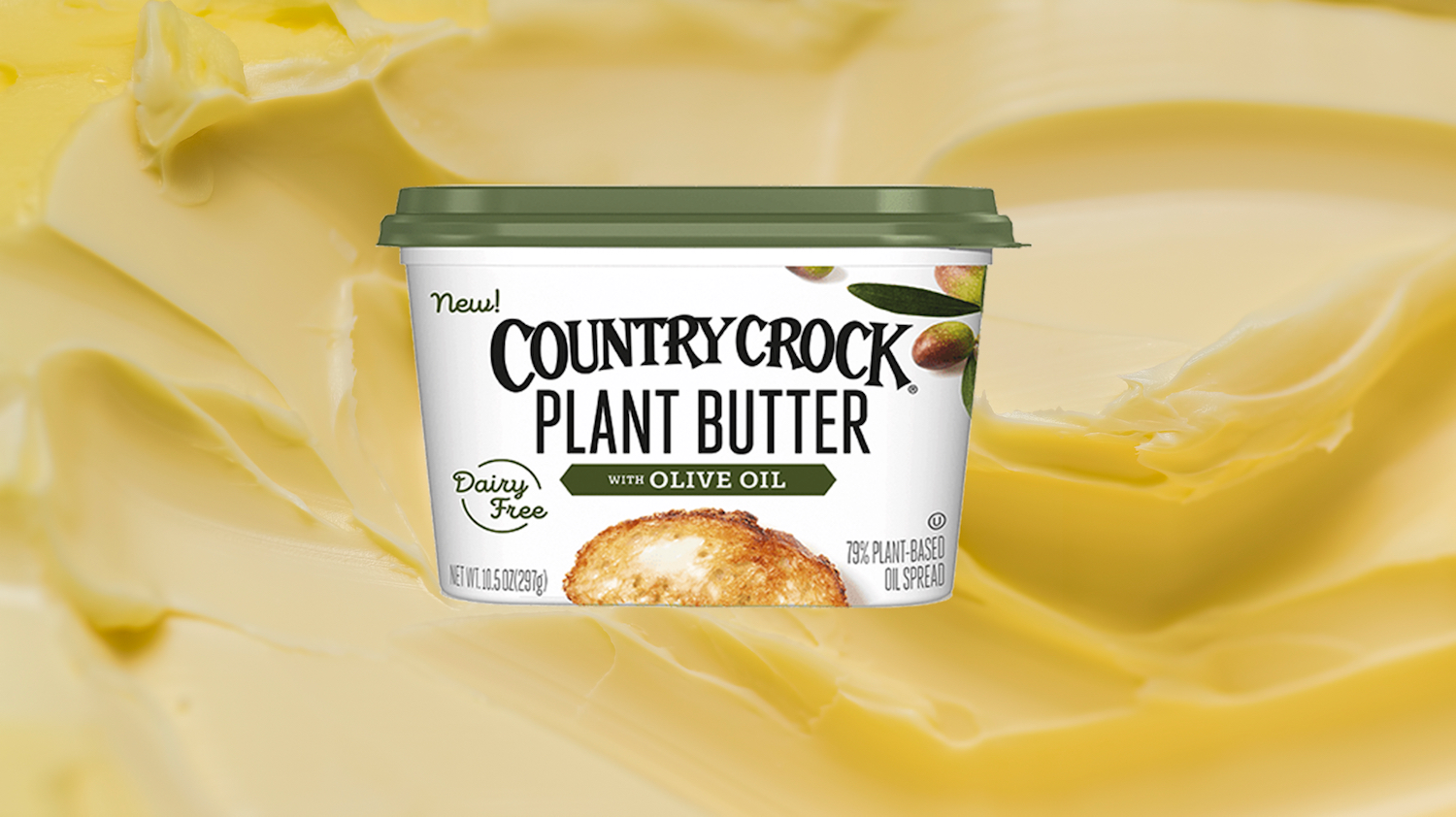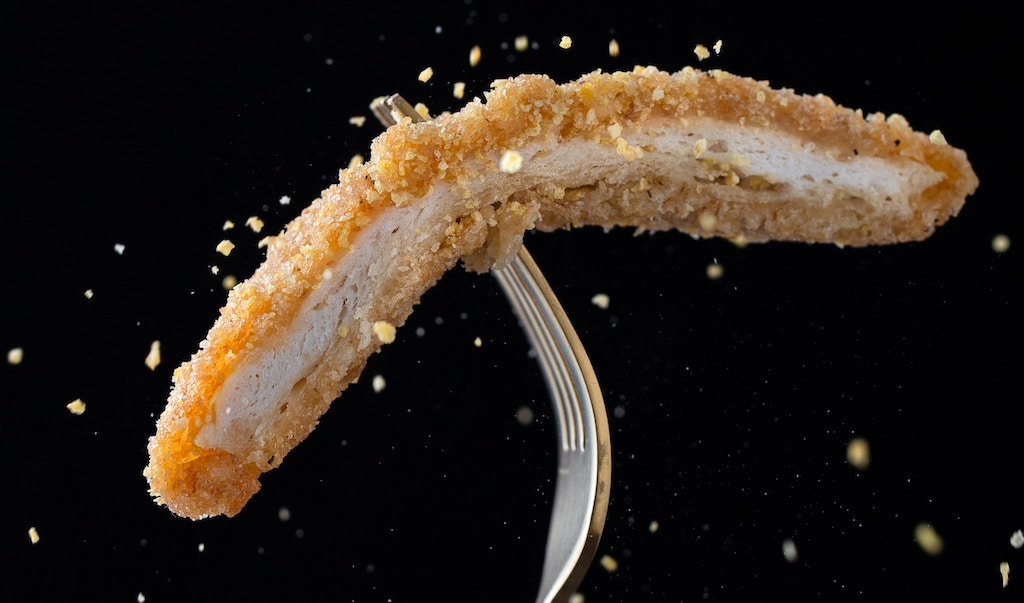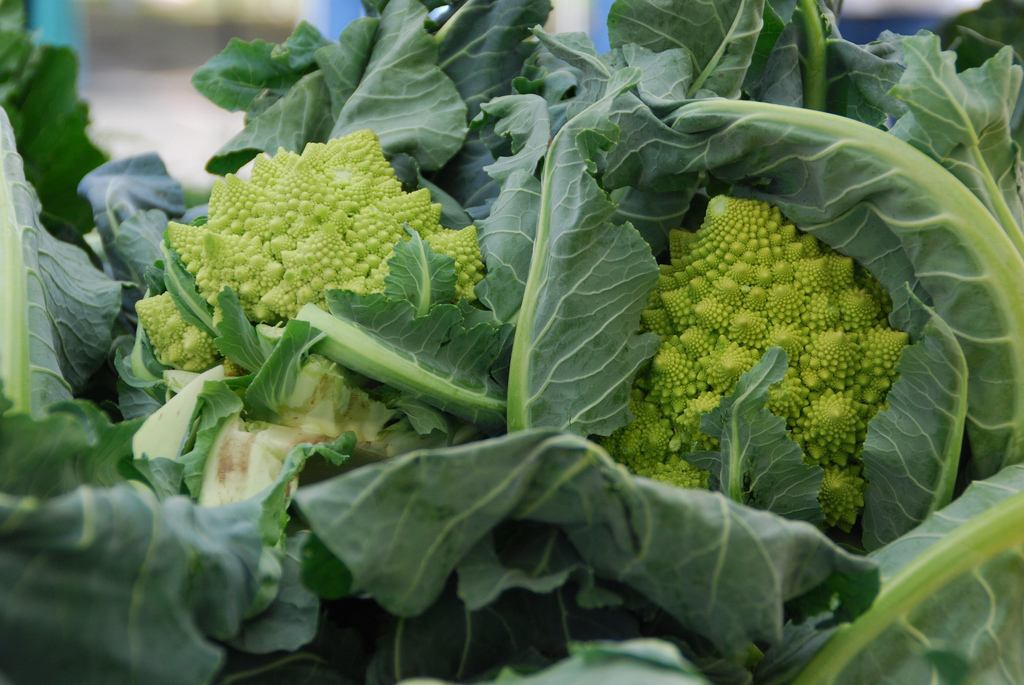
Country Crock, stanzi11 / iStock
This week, the company behind Country Crock jumped on the plant-based bandwagon with a new line of butter-esque spreads flavored with oils from olives, avocados, and almonds. They’re calling it plant butter.
“I have to say, it tastes just like regular dairy butter, and it’s great for cooking and baking,” says the company’s pitchman, Antoni Porowski. It’s the television personality’s second foray into food marketing, after devising new recipes for the fish-stick company Gorton’s earlier this year. “If you’re leaning towards a plant-based diet, you don’t have to change the whole recipe around. It’s starting out small.” Porowski rose to fame teaching people how to make hot dogs and guacamole on Queer Eye.
You might know plant butter by another name: Margarine. When it was first invented, more than 150 years ago, the product was made with beef tallow. But since the 1950s, margarine has been made without animal products. Most formulations, including Country Crock’s, are based on emulsifying plant oils—specifically soybean or cottonseed—with water.
“I think the challenge is that margarine probably doesn’t have a name as attractive as plant butter,” says Scott Rankin, chair of the food science department at the University of Wisconsin, Madison, whose academic focus is dairy products. Rankin compared the ingredients and nutrition facts of Country Crock’s old-fashioned spreads and newfangled plant butters at the request of The New Food Economy.
He said he couldn’t find anything in the plant butter of “great nutritional merit.” Despite the presence of pea protein, a trendy ingredient in plant-based burgers, there were zero grams of protein per serving, which indicated to him that a little dash was likely used as an industrial ingredient to hold together the mixture, known as an emulsion. The plant butter might taste a little different than the spreads. More olive-y, or avocado-y, depending on what you’re going for.
Functionally, Rankin says, the two products are indistinguishable. They’re lipid emulsions that spread well on toast, and could be used for making mac and cheese. The major difference between the original spread and the plant butter with olive oil, he says, is in the fat content and caloric value. The original spread’s primary ingredient is water, while plant butter leads with a mixture of oils. Other ingredients differ slightly.
Margarine has long been advertised as a heart-healthy substitute for butter. Indeed, Upfield—which did not respond to a request for comment by publication time—brags that plant butter, like its spreads, are less dense in saturated fats than traditional dairy butter. Whether or not that’s actually better for anyone, nutritionally, has recently come into question. Ironically, that would be one of the big differences between plant butter and good old spreads—the amount of fat.
Country Crock’s margarine rebrand is already drawing the ire of dairy farmers. In a statement, the National Milk Producers Federation said the “ridiculous” rebrand is an attempt to revive a flagging product, as margarine consumption recently hit a 75-year-low.
Over the past few years, as fluid milk consumption has fallen, the foundation tried to stop other companies from using terms like “almond milk,” and lobbied federal regulators hard to do something about it. These battles are part of the dairy industry’s consistent playbook of attacking milk substitute makers, including margarine companies.
It seems the butter wars are destined to continue.










